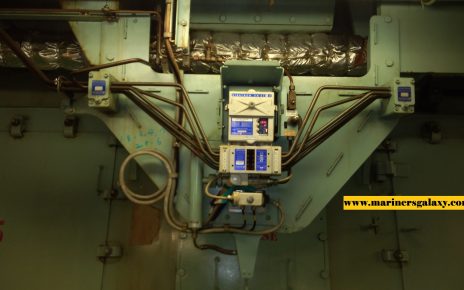Piston crack indication in a marine diesel engine. A piston crack is a serious defect that can affect the performance and reliability of a marine diesel engine. A piston crack can occur due to various factors, such as thermal stress, mechanical fatigue, improper installation, excessive load, or poor lubrication. A piston crack can lead to loss of compression, leakage of combustion gases, overheating, increased wear, and damage to other components. Therefore, it is important to detect and prevent piston cracks as early as possible.
There are several indications that can help identify a piston crack in a marine diesel engine.
Piston crack indication some of the common signs are
– Abnormal noise: A piston crack can produce a loud knocking or rattling noise during operation, especially at low speeds and high loads. The noise may vary with the engine speed and load, and may be more noticeable when the engine is cold or under acceleration.
– Increased blow-by: A piston crack can allow combustion gases to escape from the cylinder and enter the crankcase, resulting in increased blow-by pressure and oil consumption. The blow-by gases can also contaminate the lubricating oil and cause sludge formation and corrosion.
– Reduced power and efficiency: A piston crack can reduce the compression ratio and the effective cylinder volume, leading to loss of power and efficiency. The engine may also experience misfiring, rough running, poor acceleration, and increased fuel consumption.
– Elevated exhaust temperature: A piston crack can cause the combustion temperature to rise due to incomplete combustion and leakage of hot gases. This can result in elevated exhaust temperature and increased thermal stress on the piston and other components. The exhaust gas may also contain traces of oil or metal particles from the piston.
– Visual inspection: A piston crack can be detected by visual inspection of the piston crown, skirt, ring grooves, and pin bore. The crack may appear as a hairline fracture or a wide gap, depending on the severity and location of the defect. The crack may also be accompanied by signs of scuffing, scoring, pitting, or deformation on the piston surface.
To prevent piston cracks in a marine diesel engine, it is essential to follow the manufacturer’s recommendations for maintenance and operation. Some of the preventive measures are:
– Ensure proper installation and alignment of the piston and connecting rod.
– Use good quality fuel and lubricating oil that meet the specifications of the engine.
– Avoid overloading or over speeding the engine.
– Monitor and control the engine parameters such as speed, load, temperature, pressure, and vibration.
– Perform regular inspection and testing of the piston and other components for any signs of wear or damage.
– Replace or repair any defective or worn-out parts as soon as possible.
This was all from this article on piston crack indication. Hope you enjoyed reading this and if you have any questions and queries, please comment below.



